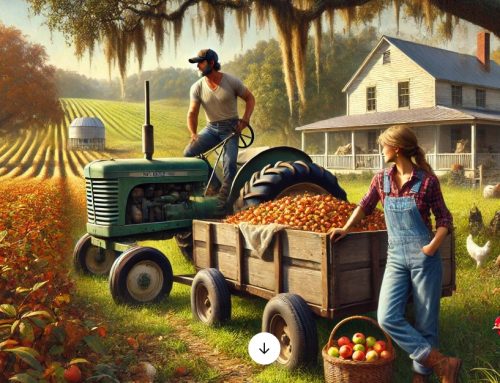In the Northeast, October is a pivotal month for farmers as they wrap up the growing season and prepare for winter. Here are the key tasks farmers should focus on:
1. Harvesting Crops
- Tree Fruits: Harvest apples, pears, and other late-season tree fruits before hard frosts.
- Root Vegetables and Fall Crops: Complete the harvest of root vegetables (carrots, beets, turnips) and fall crops (pumpkins, squash, Brussels sprouts) before freezing temperatures set in.
- Grains: In regions growing corn and soybeans, October is crucial for harvesting these crops to avoid frost damage and ensure quality.
2. Soil Management
- Soil Sampling: Conduct soil tests to assess nutrient levels and pH, preparing for next spring’s planting.
- Tillage: Perform fall tillage if needed to incorporate crop residues and prepare fields, especially if using organic matter like manure or compost.
3. Cover Cropping
- Plant Cover Crops: Plant cover crops such as rye, clover, or winter wheat to protect soil over winter, prevent erosion, add organic matter, and improve soil health.
4. Winterizing Equipment and Infrastructure
- Machinery Maintenance: Clean, repair, and store farming equipment to prevent damage during the winter months.
- Protecting Buildings: Winterize barns, greenhouses, and other structures by sealing gaps, insulating pipes, and ensuring water lines are protected from freezing.
5. Livestock and Farm Animal Preparation
- Prepare Facilities: Ready barns and shelters for livestock by checking heating systems, insulating water troughs, and securing bedding supplies.
- Feeding and Health Management: Ensure sufficient feed and bedding for the winter. Conduct health checks, vaccinations, and adjust feeding strategies for colder weather.
6. Pest and Disease Management
- Monitor Fields and Orchards: Continue to scout for pests and diseases to prevent them from overwintering and affecting next season’s crops.
- Cleanup: Remove plant debris and fallen fruit from orchards to reduce pest and disease risks.
7. Orchard and Vineyard Care
- Pruning and Maintenance: Begin pruning fruit trees and grapevines after leaves fall to prepare them for the next growing season and manage pest pressure.
- Soil Care: Apply lime or other soil amendments as needed based on soil test results to balance pH and nutrients.
8. General Farm Cleanup and Organization
- Clear Debris: Clean up fields, remove old crop residues, and organize equipment to reduce pest habitats and prepare for the next planting season.
- Store Tools: Properly store all tools and supplies to protect them from weather damage and ensure they are ready for spring use.
9. Planning and Record Keeping
- Review and Plan: Analyze harvest data, review farm performance, and start planning for the next planting season. Evaluate financials and make necessary adjustments for next year’s budget and operations.
By focusing on these tasks, farmers in the Northeast can ensure their farms are well-prepared for winter and ready for a successful growing season next year.
Need advice? Call us at 517-458-9741 or email us at info@triplekirrigation.com.




